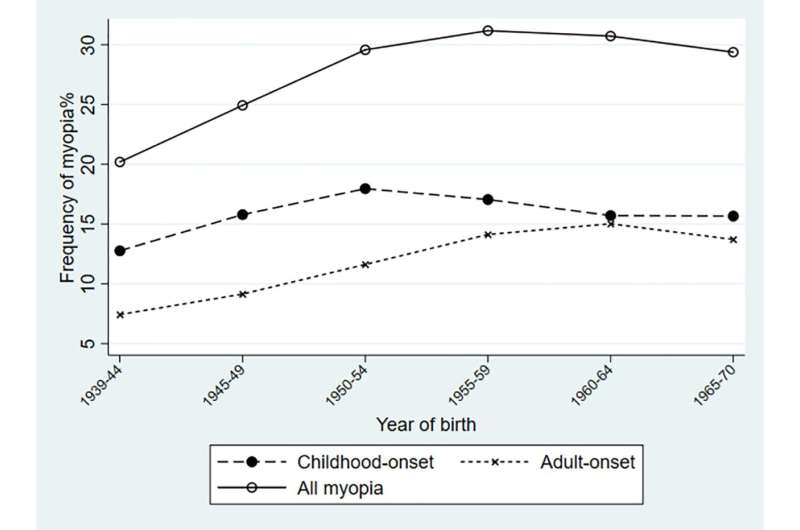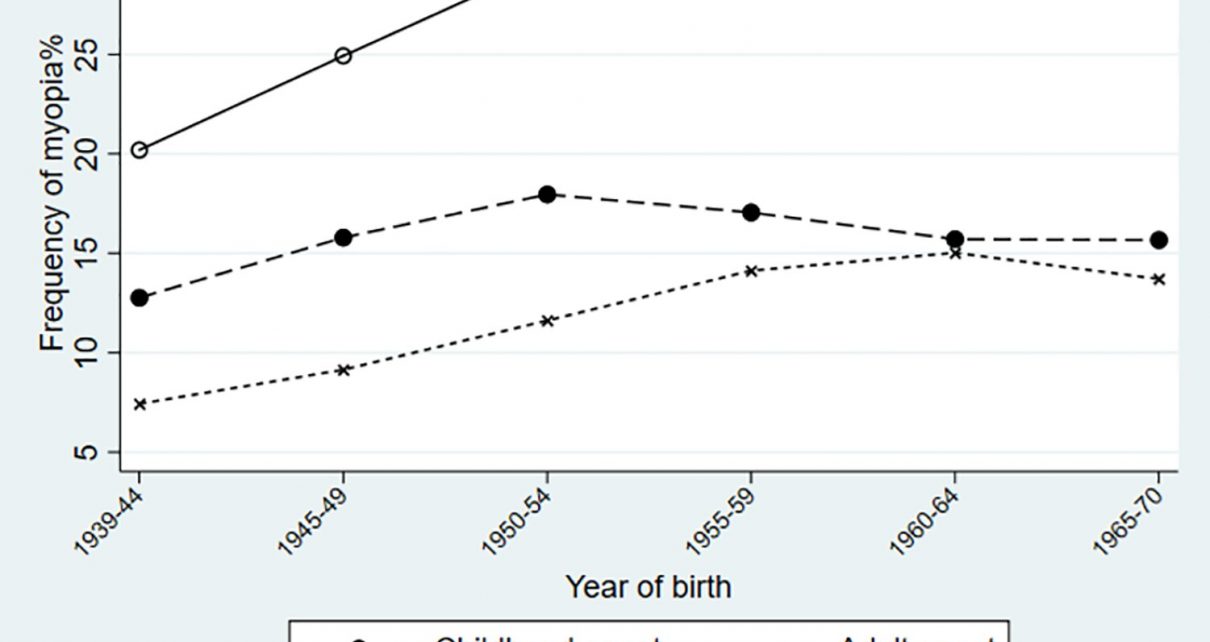
Changing environmental factors as well as changing gene-environment interactions could be to blame for increasing rates of myopia, also known as nearsightedness or shortsightedness, over time, suggests a new study published this week in the open-access journal PLOS ONE by Jugnoo Rahi of University College London, and other members of the UK Biobank Eye and Vision Consortium.
Previous studies have pointed toward an emerging “epidemic” of myopia, characterized by increased prevalence of myopia accompanied by both a shift toward younger age at onset and greater severity. In the new study, researchers used data on 107,442 UK Biobank study participants aged 40 to 69 years old, born between 1939 and 1970. All participants underwent a detailed ophthalmic exam and provided sociodemographic data as well as information on their history of glasses and vision problems.
Overall, myopia frequency increased from 20.0% in the oldest cohort (born 1939-1944) to 29.2% in the youngest cohort (born 1965-1970). Temporal trends varied between types of myopia, with a greater increase in adult-onset myopia compared to childhood-onset myopia, and a greater increase in low myopia compared to high myopia. Moreover, the mean spherical equivalent—a measure of myopia severity—worsened between cohorts, but only for childhood-onset myopia, shifting from a median of -3.8 diopters (IQR -2.4 to -5.4) in the oldest cohort to -4.4 (IQR -3.0 to -6.2) in the youngest.
Among the trends, there were additional, notable differences in patterns of associations with sex, ethnicity, socioeconomic status and education. In particular, the association between higher educational attainment and myopia increased over time, from an adjusted odds ratio of 2.7 in the oldest cohort (95% CI 2.5-2.9) to an OR of 4.2 in the youngest cohort (95% CI 3.3-5.2) with the greatest increase seen for childhood-onset myopia (OR 3.3 (2.8-4.0) to 8.0 (4.2-13)).
The authors conclude that their evidence supports a complex of changing environmental factors and presumably changing gene-environment interactions, discernible only by distinguishing between childhood-onset and adult-onset myopia, which account for increasing myopia frequency.
Source: Read Full Article



